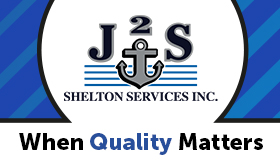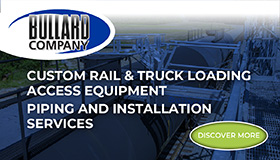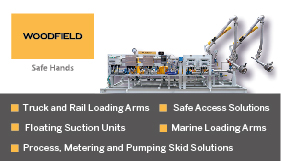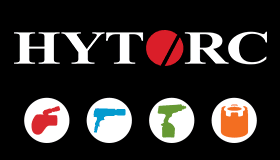IT infrastructure systems have always had issues with data sharing. At the dawn of the computing era, advancements in computing power — the number of operations performed per second — made headlines. However, business leaders quickly realized the impact of that horsepower was limited by how they could share the resulting data with different parts of the business — and further — with partners.
While the development of international telephony allowed people on different continents to talk instantly, it did not translate languages. Similarly, the internet enabled fast data sharing, but with individual companies using data in different formats and accessing it in different ways, connectivity itself isn’t the solution.

For terminal operations professionals, this challenge can present itself in several ways. Here are three of the most common and how to solve them.
1. Ensuring compliance
Petroleum product production and transportation are highly regulated, and there are myriad qualifications for both drivers and their vehicles’ engineering. Drivers that are not in compliance cause delays, which have a domino effect: not only can that load not be completed, but the driver behind that rig is also delayed. And the driver behind that. This can result in costly drive-offs. If you have just three load issues in one week, it could mean over $18,000 in lost opportunities.
2. Onboarding
Too often, adding qualified drivers to a terminal’s authorized list requires repeated phone calls, notes kept in a spreadsheet, or other manual steps, which can take days at best and sometimes weeks.
Instead, terminal IT staff should be empowered to implement digital solutions that automatically communicate with carriers to register drivers — and their rigs — as qualified or not. This ensures there are no delays when those drivers arrive at the rack, and the full tanker can exit quickly, making room for the next driver.
3. Supply events and outages
Maintenance is critical to keeping a terminal running safely and efficiently. But sometimes, things break. Whether a lockout is planned or unplanned, if customers do not receive prompt communication, it can result in costly delays or even lost business.
Of course, to avoid frustrations, current product inventories and allocations must also be promptly shared. After all, the point of activity at the terminal is to move product out. Run-outs will naturally occur, but proactive communication will minimize negative customer impacts.
If communication regarding allocation and credit can be quickly and accurately shared and logged before lifting, lost opportunities can be minimized — even eliminated, keeping operations moving smoothly.
The fix
Innovative digital technology not only helps solve these and other issues, but it also helps make your terminal the premiere destination for carriers by delivering optimal experiences. And like any business, keeping the customer happy is the number one concern.
By issuing outage, maintenance, and supply issue notifications, the customers of a digitally-modernized terminal will come to trust it as an available, no-friction partner and send more drivers to it, fueling revenue growth.
In fact, by implementing digital best practices, just one additional load per week could result in over $20,000 in additional annual revenue. If a terminal can gain a reputation as efficient and easy to move through, those additional liftings will substantially add to the bottom line.
The return on digitalization investment
Partner Insights from DTN automates terminal data collection and sharing, easing the work of the IT staff. With seamless integration into existing systems, Partner Insights gathers and disseminates product information, supply events, terminal status, and more, keeping all partners informed, preventing issues, and increasing terminal efficiency.
By implementing a digital solution like Partner Insights, a terminal operator could see additional revenue at a single terminal of almost $30,000. If there are 25 terminals under their control, they could realize a revenue potential of $750,000.
If that looks like a goal you’d like to achieve, head to our Partner Insights ROI calculator, and see for yourself how many opportunities you could discover.
Explore more Partner Insights resources today.
For more information visit www.dtn.com



















